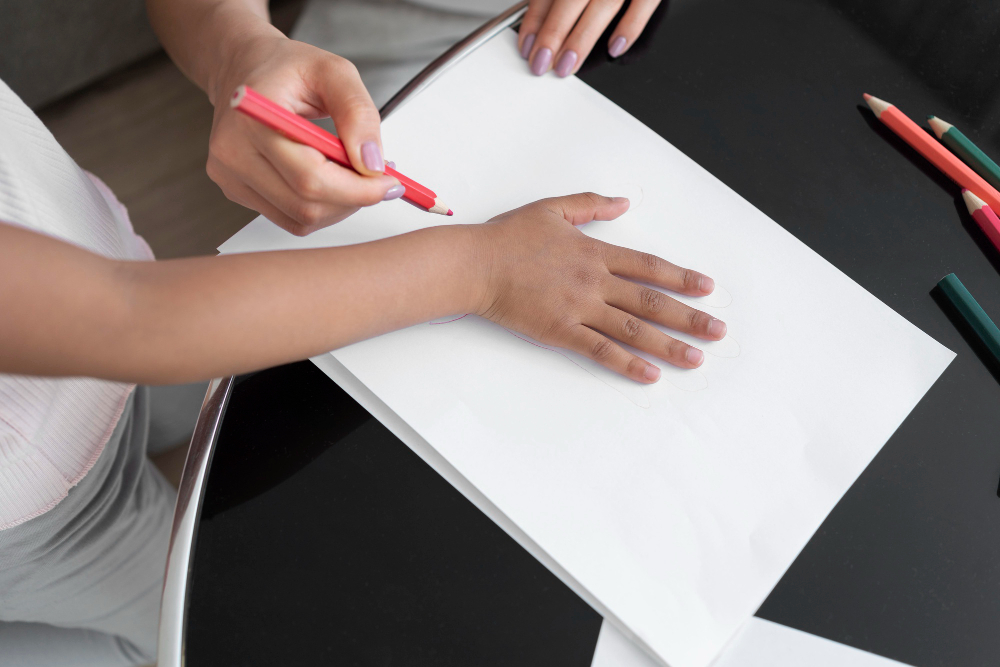When it comes to capturing the human form in art, mastering the anatomy of arms is a skill that can elevate your drawings from simplistic outlines to detailed, realistic representations. Components are essential for depicting lifelike figures and conveying emotions, actions, and gestures. From the elegant curve of the bicep to the intricate network of tendons, understanding arm anatomy is a journey that leads to more captivating and expressive artwork.
The Structure of Arms
Before you dive into drawing arms, it’s crucial to understand the underlying structure that gives arms their shape and mobility. The component consists of three main parts: the upper arm (humerus), the forearm (radius and ulna), and the hand. The upper arm connects to the shoulder blade and collarbone, forming the shoulder joint, while the forearm connects to the upper arm at the elbow joint. The hand completes the structure with its intricate bones, muscles, and joint arrangement.
Key Muscles of the Arm
To draw arms realistically, familiarize yourself with their shape’s significant muscles. The biceps and triceps are the most prominent muscles of the upper arm. The biceps create the characteristic bulge on the front of the peninsula, while the triceps form the back of the arm. The forearm is home to a complex muscle network that controls wrist and finger movements. The extensor muscles run along the top of the forearm, while the flexor muscles are on the underside.
Navigating the Joint
The elbow joint is a crucial pivot point that enables arm movement. Understanding its structure helps in creating accurate depictions of arm poses. The elbow joint consists of three bones: the upper arm’s humerus and the forearm’s radius and ulna. The humerus fits into the ulna and radius like a hinge, allowing for bending and rotation. When drawing arms, please pay attention to the positioning of the elbow joint, as it dramatically influences the arm’s overall posture.
Capturing Muscle Definition
A key element in drawing realistic arms is capturing the subtle variations in muscle definition. When the arm is relaxed, muscles are less pronounced, resulting in smoother contours. However, muscles become more defined when flexing the arm, creating noticeable bulges and curves. Study reference images and observe how forces change in different arm positions to depict muscle flexion and tension accurately.
Conveying Emotion Through Arms
Arms play a significant role in conveying emotions and actions in art. A raised arm can suggest excitement or victory, while a lowered one can express sadness or defeat. Pay attention to the positioning and angle of the arms to get the intended emotion. Experiment with different component poses to explore the range of expressions they can evoke, whether it’s the power of a clenched fist or the vulnerability of an open palm.
Tackling Challenging Angles
Foreshortening, depicting objects or body parts at an angle to the viewer, can be particularly challenging when drawing arms. When a component is foreshortened, its proportions appear compressed, and its perspective changes. To tackle this, break down the arm into simplified shapes and pay attention to the foreshortened muscles and joints. Use reference images or a mirror to study how your component looks from various angles, helping you grasp the visual distortion that foreshortening creates.
Navigating Hand Anatomy
Drawing hands can be as complex as drawing arms, but a solid understanding of hand anatomy enhances your overall depiction of the human form. Each hand consists of the palm, fingers, and thumb. The fingers are composed of three phalanges (bones), except for the thumb, which has two. Please pay attention to the joints and how they contribute to the hand’s range of motion. Understanding hand anatomy is essential for capturing realistic gestures and interactions.
Adding Depth and Realism
Once you’ve mastered the basic arm anatomy, it’s time to bring your drawing to life with shading and texture. Use light and shadow to define the contours of the muscles and create a sense of volume. Pay attention to how light falls on the arm’s surfaces, considering the light source’s direction and the specific muscle shapes. Shading adds dimension and realism, transforming a simple outline into a lifelike representation.
Honing Your Skills
As with any artistic skill, practice is the key to improvement. Dedicate time to sketching arms from various angles and in different poses. Use reference images, study anatomical diagrams, and observe real-life arm movements to refine your understanding. Don’t be discouraged by initial challenges – every pencil stroke brings you closer to mastery.
The Art of Arm Anatomy
Mastering arm anatomy is a journey that requires a blend of observation, study, and artistic intuition. By breaking down the components of arms – from muscles to joints – and understanding how they interact, you unlock the ability to create drawings that are not only realistic but also evocative. Whether drawing a figure in action or capturing a moment of quiet contemplation, the knowledge of arm anatomy empowers you to infuse your artwork with depth, expression, and a touch of human essence.
